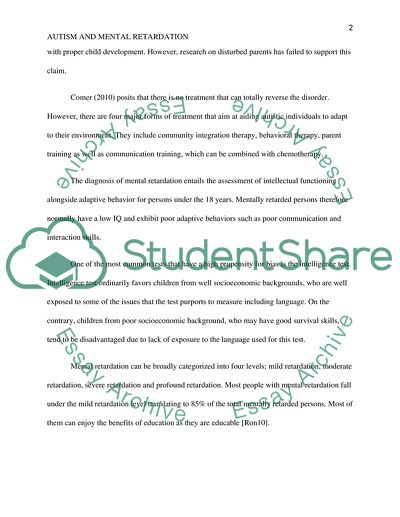Autism and Mental Retardation Assignment Example | Topics and Well Written Essays - 250 words. Retrieved from https://studentshare.org/psychology/1586182-autism-and-mental-retardation
Autism and Mental Retardation Assignment Example | Topics and Well Written Essays - 250 Words. https://studentshare.org/psychology/1586182-autism-and-mental-retardation.


